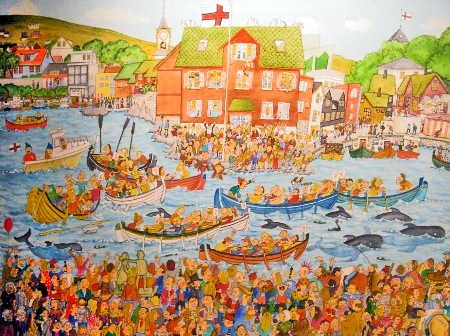

|


Photos Part 3
Bild-Textbericht über die Aktionen von ProWal/WDSF im Juli/August 2010 auf den Färöer Inseln.
Photo-Text Report about actions taken by ProWal/WDSF during July/August 2010 on the Faroe Islands.
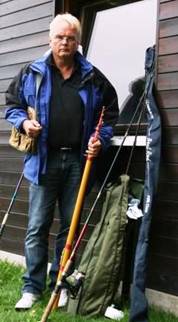
Als Fischer getarnt mischten sich die Tierschutzaktivisten unter die Walfänger. Hier beim Besuch eines alten Walfängers, der seine Relikte aus früheren Jagden auf Großwale voller Stolz in seinem Garten ausstellt.
Pretending to be fishermen the activists infiltrated the whalers. Here at a visit to an oldtimer, who, in his backyard, is proudly displaying his exploits of former hunts of great whales.
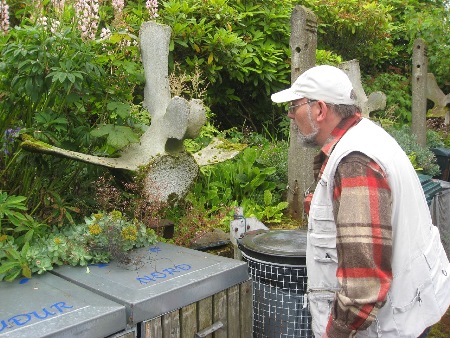
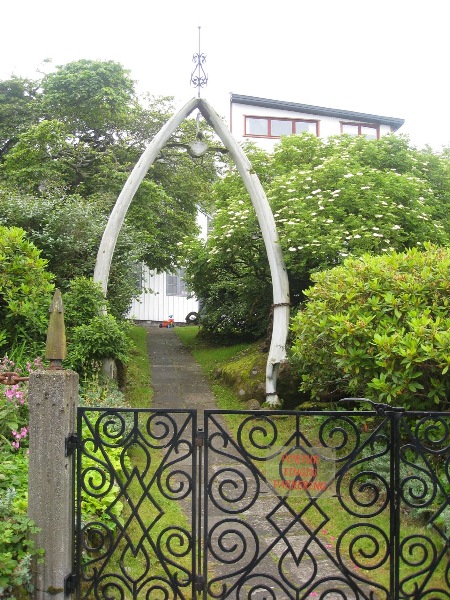
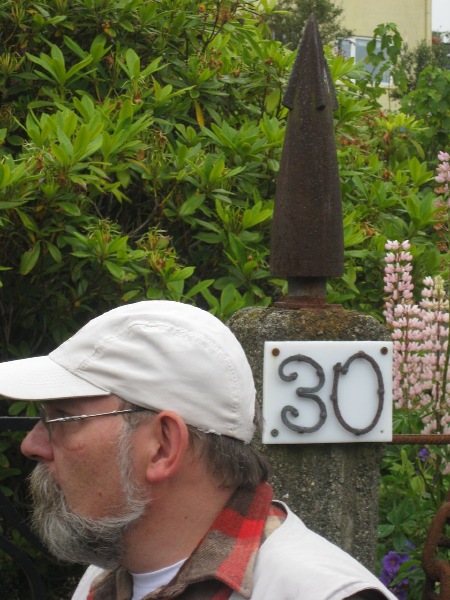
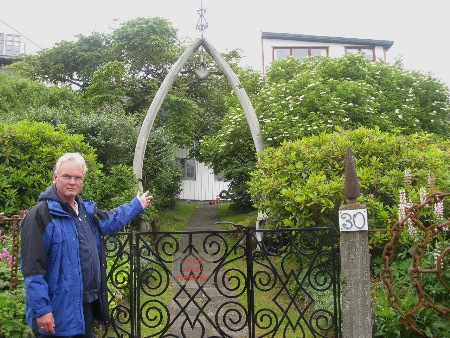
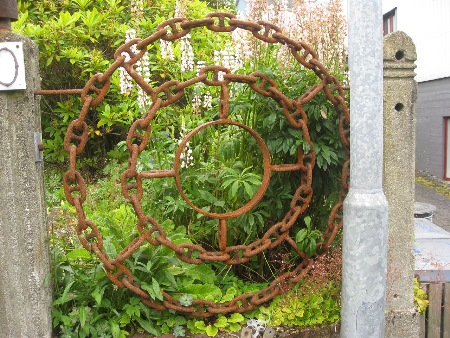
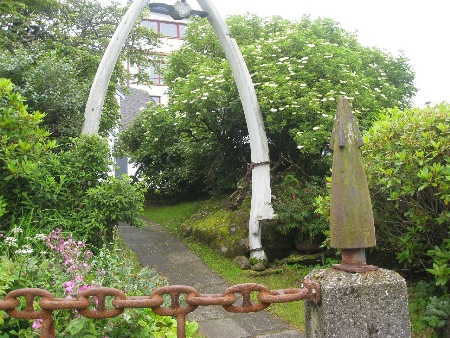
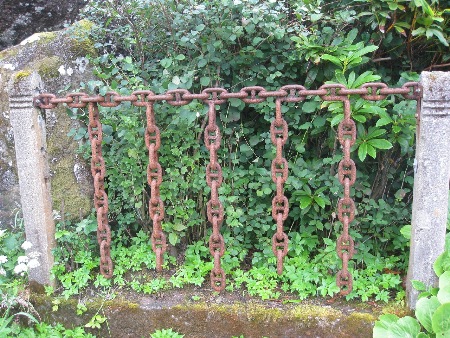
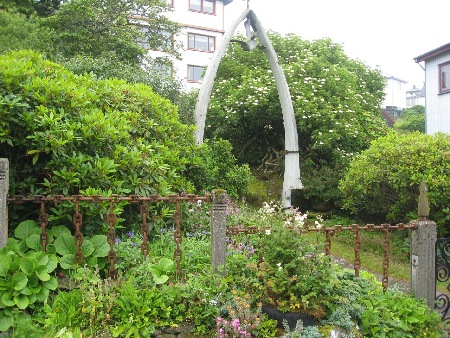
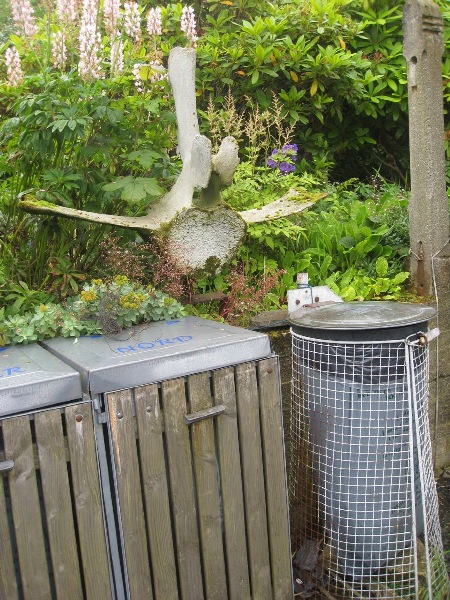
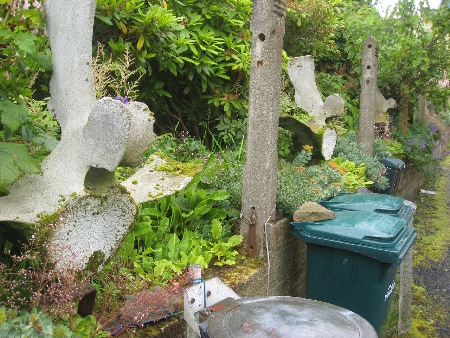
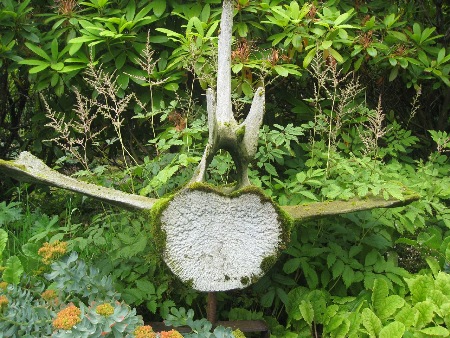
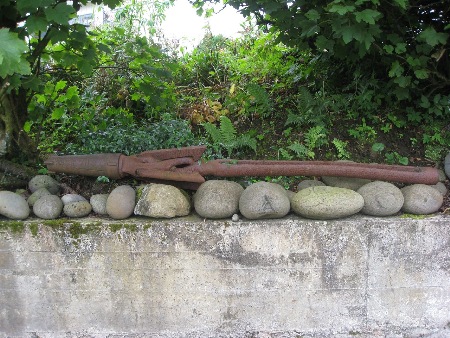
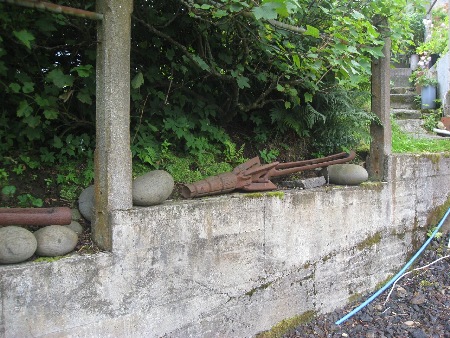
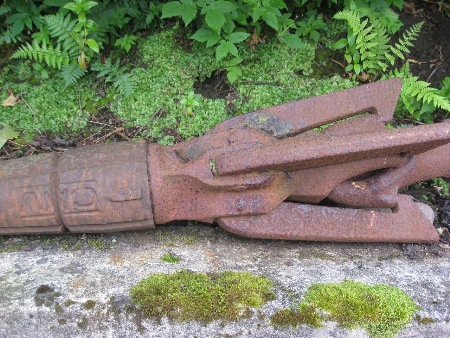
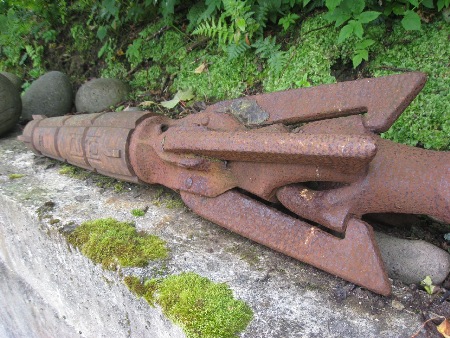
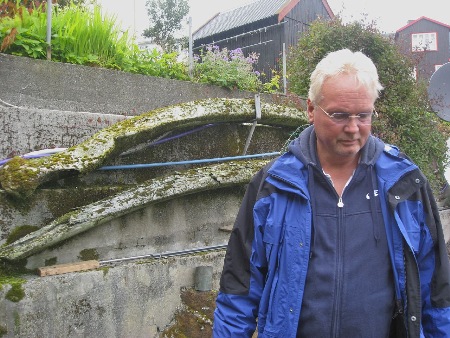
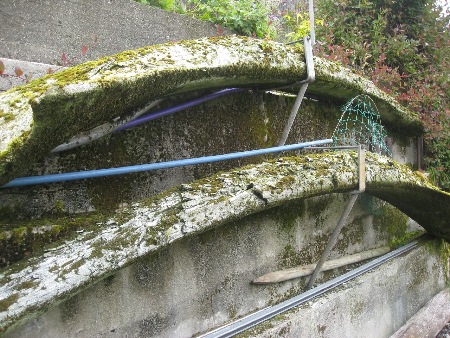
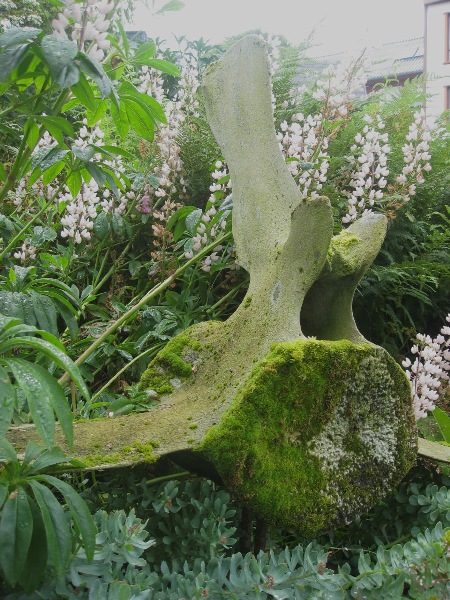
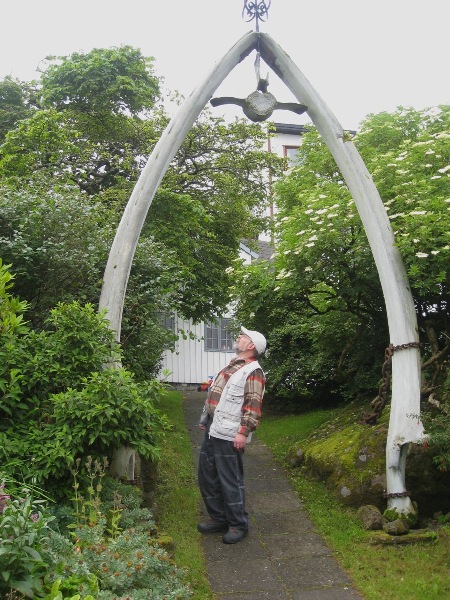
Kindererziehung - die Walfänger von morgen?
Den einheimischen Kindern bringt man schon früh das Fischen und Jagen bei. Mit Angelruten und frischem Fisch als Köder, versuchen sich die Kinder beim Krebseangeln. Große Freude herrscht bei der Familie, wenn die hungrigen Krebse an der Angelschnur zappeln.
Educating the Children - The Whale Hunters of Tomorrow?
From early on the local kids are being trained in fishing and hunting. With fishing rods and fresh fish as bait the children are trying to catch crabs. The family is overjoyed when the hungry crabs are struggling at the end of the fishing line.
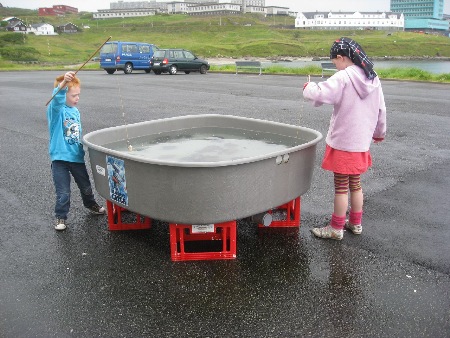
Toter Seeaal...
Dead Sea-eel...
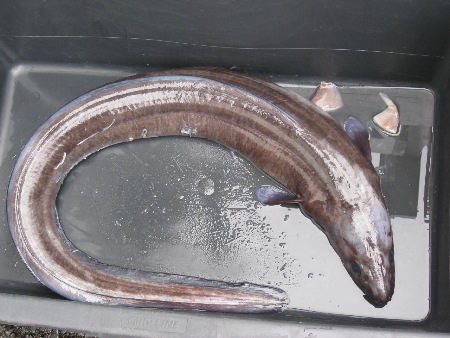
Das Märchen von einer uralten Tradition
Der heutige Walfang hat mit einer früheren Tradition nichts mehr zu tun...
The Fairy Tale of Ancient Traditions
Today’s whale hunt is no longer connected to old traditions...
In einem Touristenladen wird das wichtigste Schlachtwerkzeug der Walfänger verkauft. Ein Messer, das jeder Teilnehmer an der Grindwaljagd besitzt.
A tourist store offers the most important tools for the slaughter of whales for sale. A knife, owned by every person participating in the whale hunt.
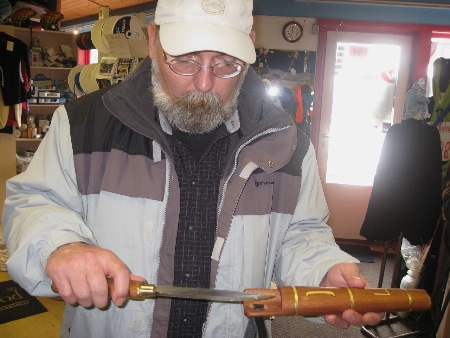
Preis: 2.500,- Dänische Kronen - etwa € 360,-
The price: 2.500.- Danish Croners - about 360,- Euros
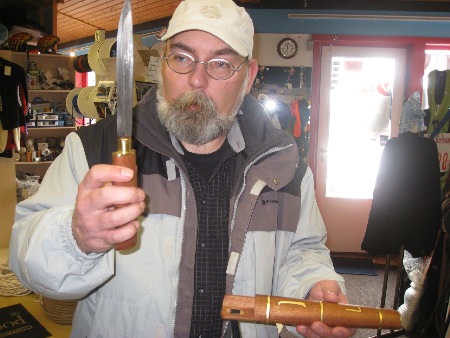
Ein Färinger hat sich auf die Herstellung dieser speziellen Messer spezialisiert.
This special knife is being manufactured by a Faroese.
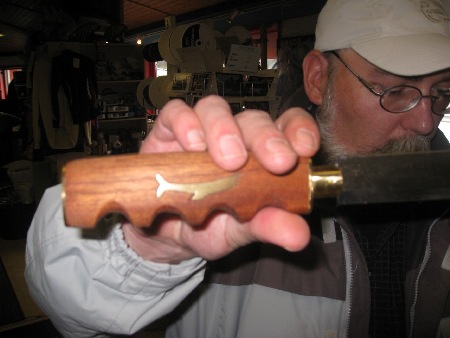
Eingelassene Walmotive...
Inlaid motives of whales...
Statistiken der Waljagd...
Statistics of the Whale Hunt...
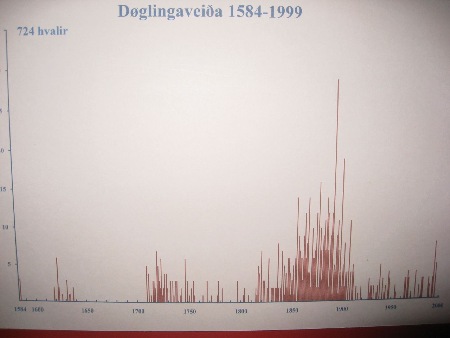
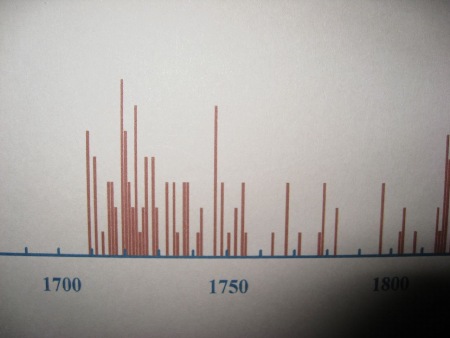
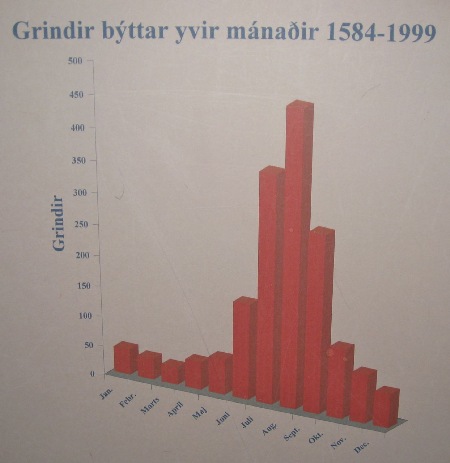
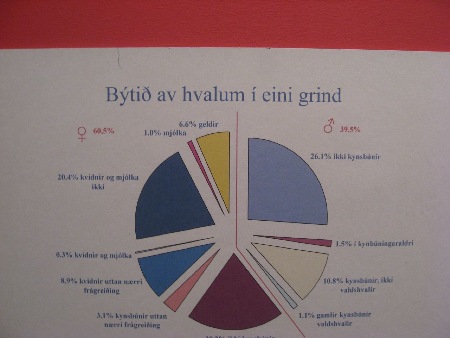
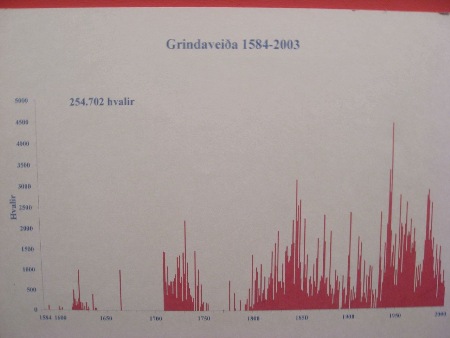
Dieser Haken wurde früher in das Blasloch der Wale geschlagen, um diese mit dem Seil ans Ufer zu ziehen...
Formerly, this hook was pushed into the blow hole of the whales to pull them this way onto the shore...
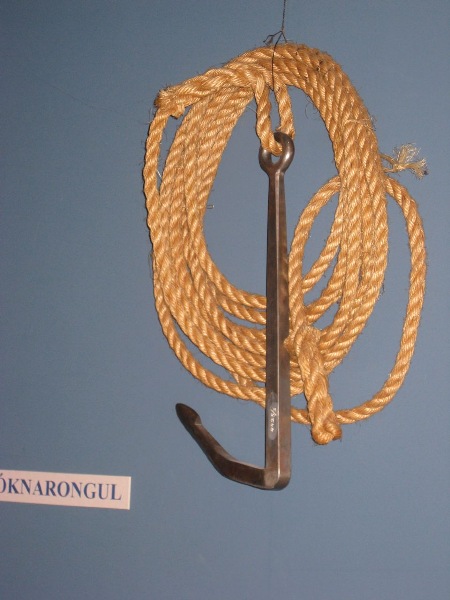
Dieser Haken wird bei der heutigen Waljagd verwendet. Der Unterschied ist, dass der Haken nicht mehr spitz, sondern abgerundet ist. Die Wale werden nach dem Anlanden an den Strand mit den Messern massakriert.
Nowadays, this hook is being used for the whale hunt. The difference is that the hook is no longer sharp, but rounded. The whales are being slaughtered with a knife after having been pulled ashore.
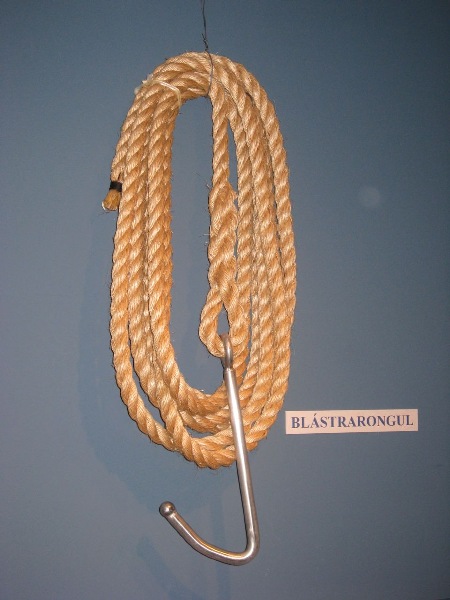
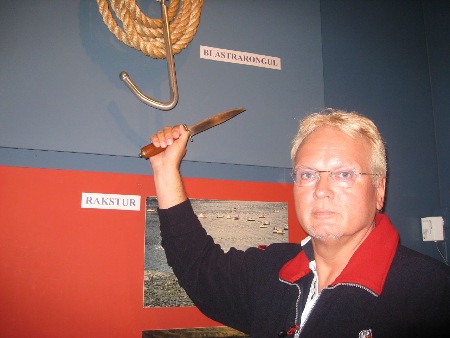
Dieses Gerät wird hinter den Treibbooten hergezogen. Es verursacht ein flötenähnliches Geräusch, vor dem die Wale in Panik flüchten - direkt auf die Buchten zu...
This tool is being pulled behind boats through the water and emits a flute-like sound, which will throw the whales into a panic and stampedes them right into the bays...
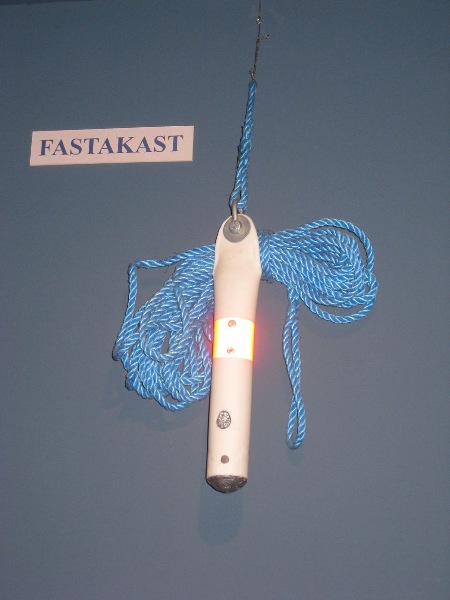
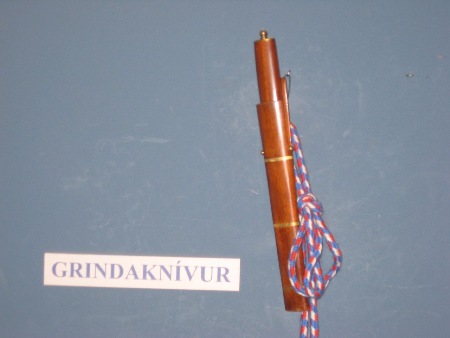
Alljährliches Massaker...
The annual massacre...
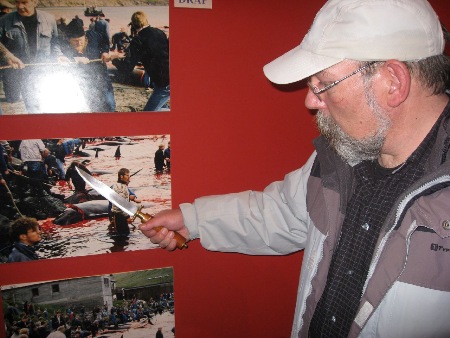
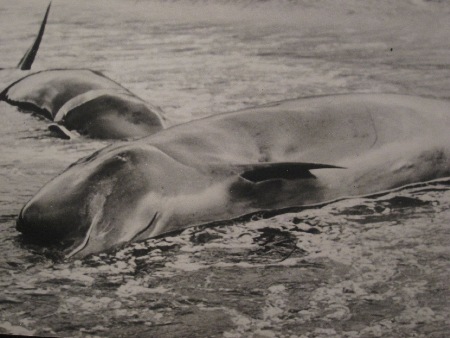
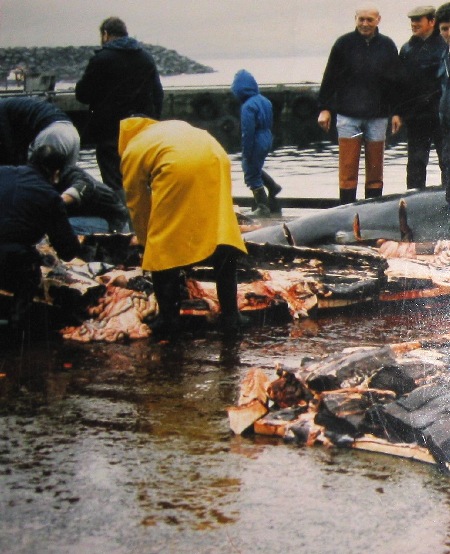
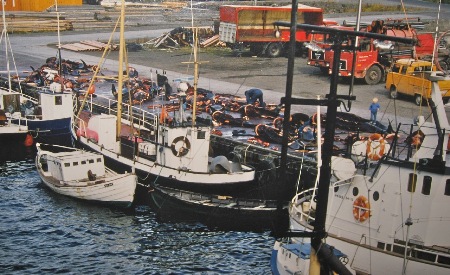

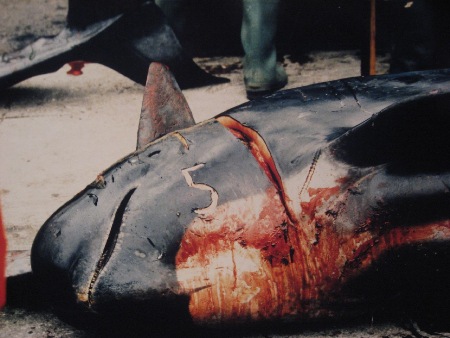
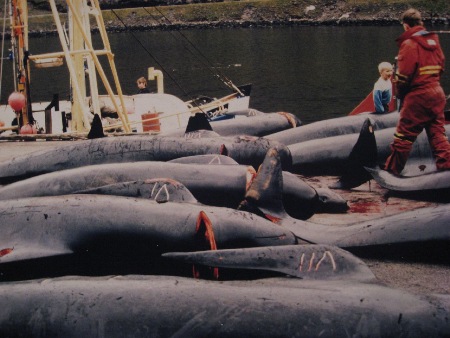
Eine Messstange aus dem Mittelalter...
A measuring stick still surviving from the middle ages....
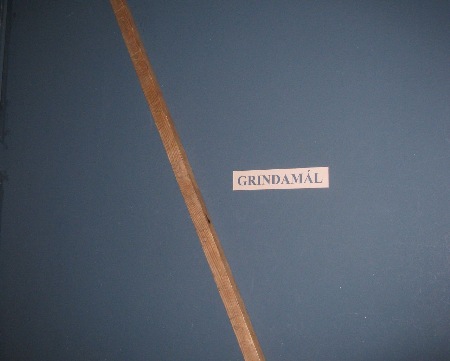
die heute noch für die Aufteilung des Walfleisches verwendet wird.
which is still being used today for the distribution of whale meat.
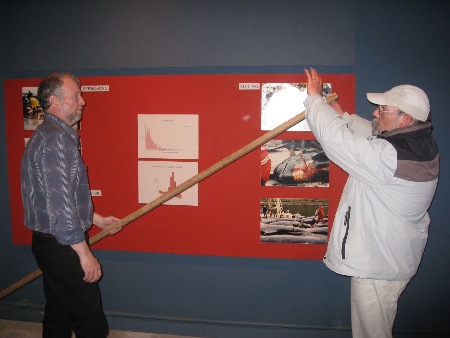
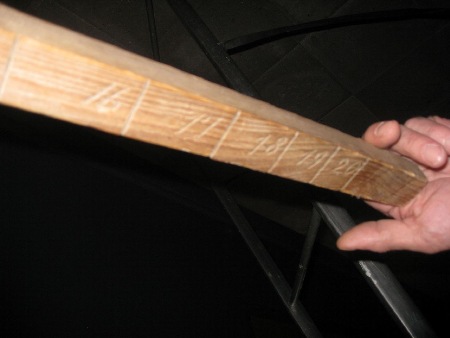
Jeder Markierungsabstand bedeutet ein Skinn - das sind etwa 38 Kilogramm Walfleisch und 34 Kilogramm Walspeck - zusammen etwa 72 Kilogramm.
Gemessen wird vom Auge bis zum Anus. Die Portionen werden an die Beteiligten der Waljagd und die Einwohnern, die sich zuvor in Listen eingetragen haben, verteilt. Auch Touristen können sich in die Listen eintragen. Der Rest der Wale wird ins Meer geworfen...
Each segment of the stick represents a “Skinn” - which is about 38 Kilogram of whale meat and 34 kilogram of blubber - altogether abt. 72 kilogram.
The measurement is taken from the eye to the anus. The portions are being distributed to the participants of the hunt as well as inhabitants, who have previously signed up on lists. Tourists are also allowed to sign up for this distribution. The remainder of the whales is thrown into the sea...
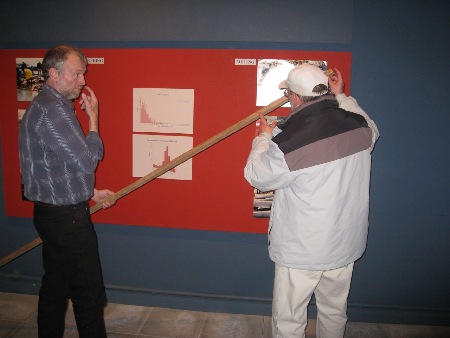
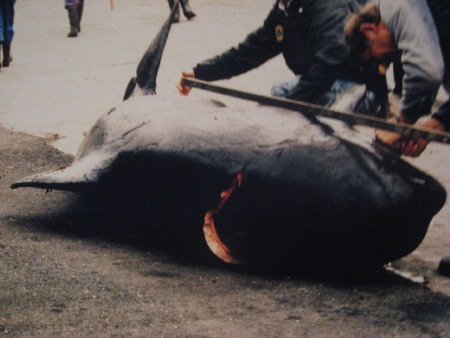
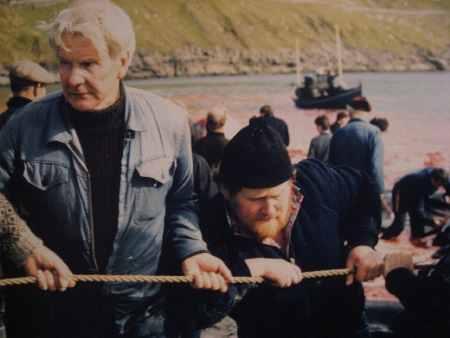
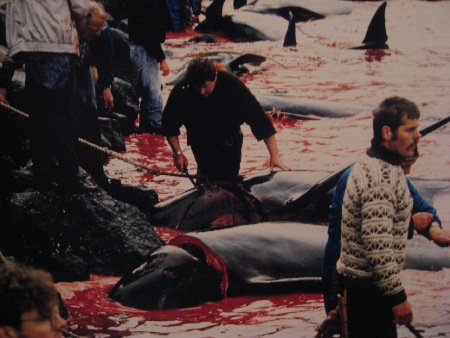
Grindwalmodell und ein echtes Grindwalskelett...
A pilot whale model and a real pilot whale skeleton...
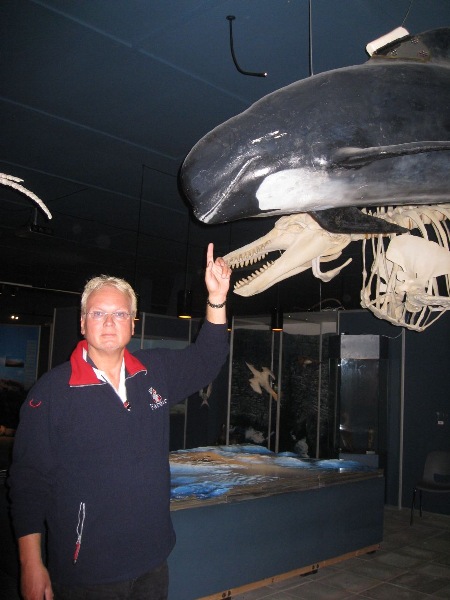
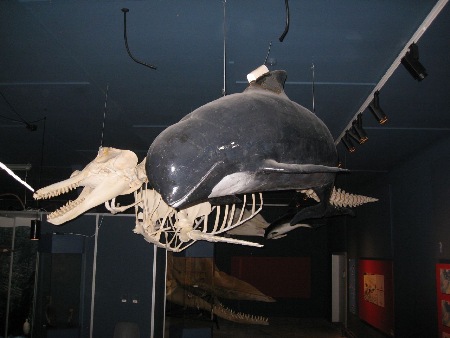
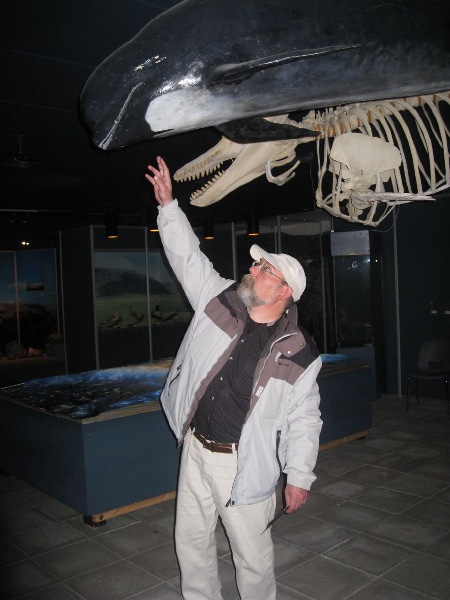
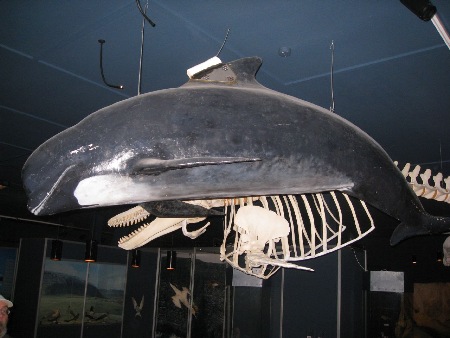
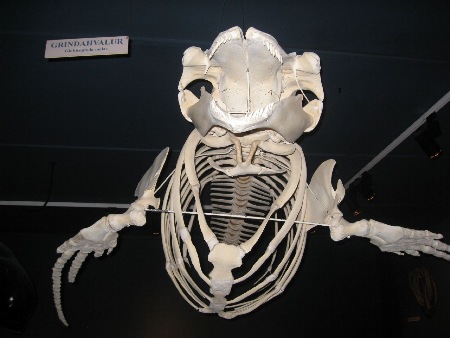
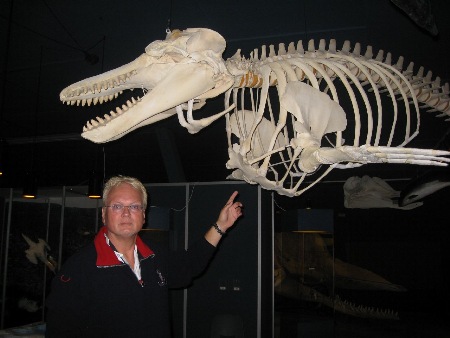
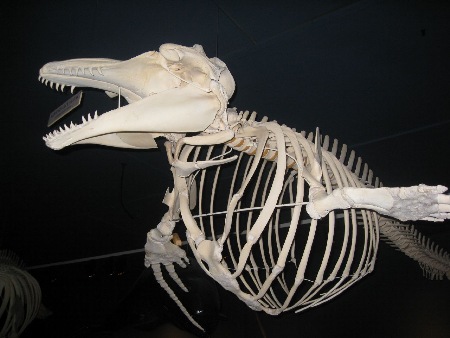
Neben dem Skelett eines Orcas befindet sich dieser riesige Kopf eines Pottwals. Der wurde nicht gefangen, sondern starb eines natürlichen Todes.
Next to the skeleton of a killer whale is the huge head of a sperm whale.
This one died of natural causes and was not hunted.
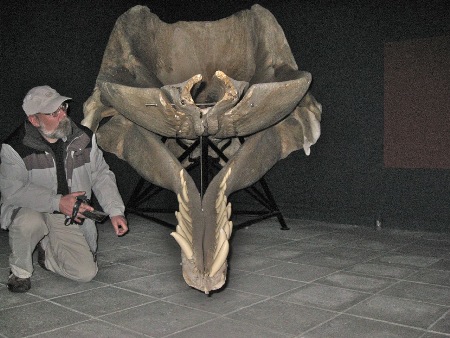
Der Kopf eines Pottwals macht etwa ein Drittel seiner Größe aus. Aus Platzgründen kann das gesamte Skelett nicht ausgestellt werden...
The head of a sperm whale makes up for one third of the whole body. Therefore, because of room restrictions, the whole skeleton cannot be displayed...
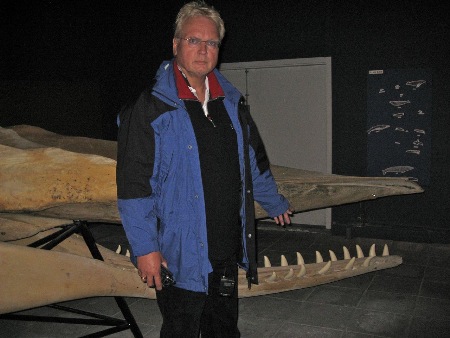
Ein weiterer Beweis, dass der heutige Walfang auf den Färöer Inseln mit einer Jahrhunderte alten Tradition nichts mehr zu tun hat...
Moderne Waljagd
Ortungsgeräte werden an Walen befestigt, um die Wanderrouten der Walschulen mit modernster Satellitentechnik aus dem Weltraum verfolgen zu können. Kommen die Walschulen den Inseln nahe, dann bricht hellste Euphorie bei den Einheimischen aus...
Further proof that the way the whales are hunted nowadays on the Faroe Islands has no connection to the ancient traditions from centuries ago ...
Modern Whale Hunt
The whales are outfitted with sounding devices so that the pods can be located with the help of the most advanced satellite techniques. When the pods are located near the islands, then the hunting lust breaks loose amongst the islanders...
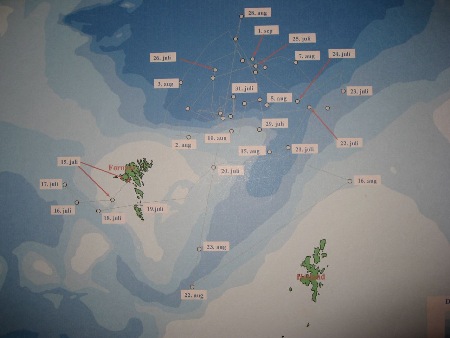
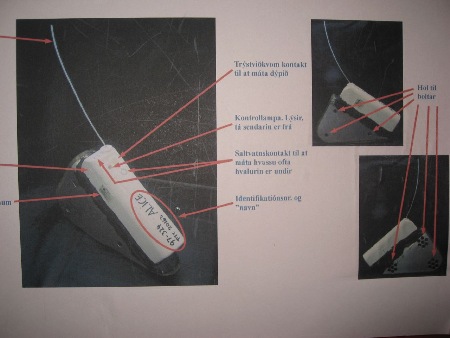
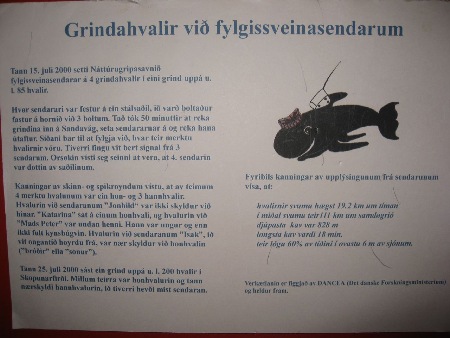
Wohlhabende Färöer Inseln...
The well-to-do Faroe Islands...
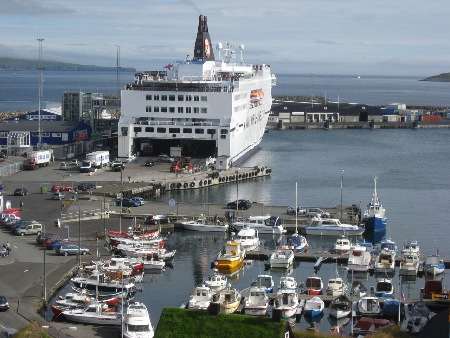
Tägliche Fähranbindungen - Yachthafen mit Sportbooten und Jet-Skis
Daily connection by ferries - yacht-harbor with yachts and jet-skis
Eigener Flughafen....
Their own airport...
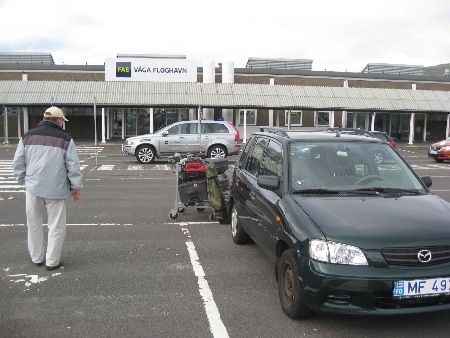
Tägliche Fluganbindungen zu verschiedenen Destinationen...
Daily flights with different destinations...
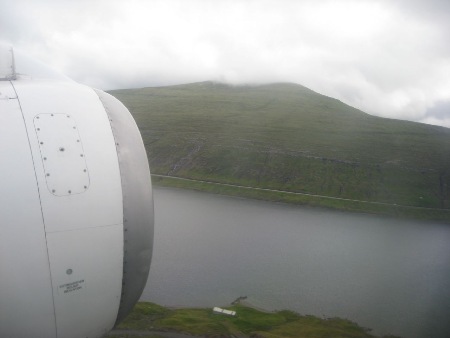
Obwohl fast jeder Einwohner mindestens einen PKW besitzt, gibt es hochmoderne Busse, die bis zu den entlegensten Winkeln der Inselgruppe fahren. Hochmoderne Unterseetunnel und Fähren verbinden die Inseln. Wer es eilig hat, benutzt ein Helikoptertaxi.
Although almost each islander has at least one car, there are also super modern buses available, which will carry you to the outermost niches of the islands. There also exist very modern tunnels, which connect the islands and here are always ferries available. And whoever is in a very great hurry can hire a helicopter taxi.
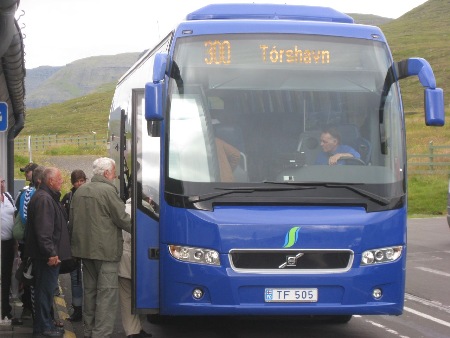
Alles wird importiert und die Einwohner können es sich durch den enormen Fischexport leisten...
Everything is being imported and the Faroese can afford it because of the tremendous fish export...
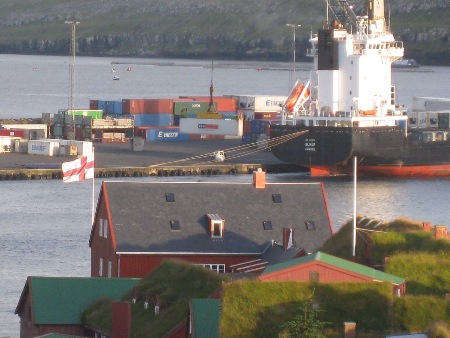
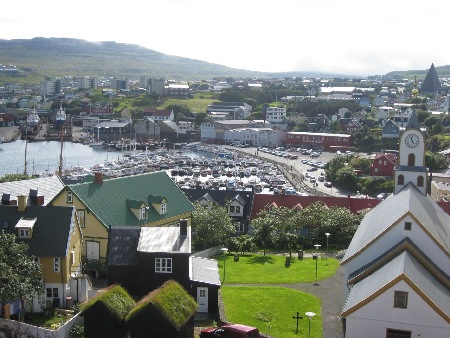
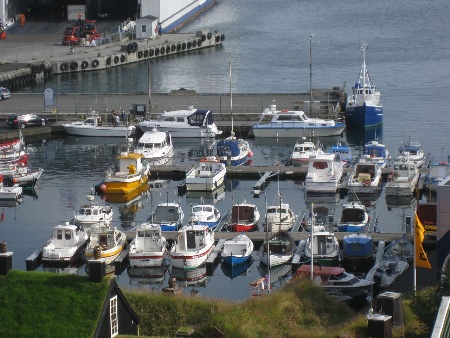
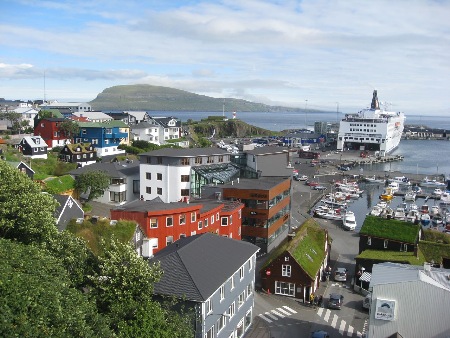
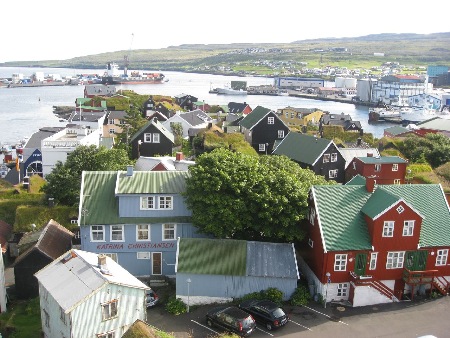
Andreas Morlok sieht keine Notwendigkeit, auf den Färöer Inseln weiterhin Walfang zu betreiben: „Mit einer früheren Tradition hat dies nichts mehr zu tun. Die Lebensmittelversorgung ist heute mehr als ausreichend. Es gibt alles zu kaufen, weil alles aus Dänemark und anderen Ländern mit täglichen Fähranbindungen und Containerschiffen importiert wird. In Thorshavn befindet sich ein riesiger Supermarkt mit neun Kassen in einer noch größerer Shopping-Mall. Eine Supermarktkette betreibt in fast jedem Ort eine Filiale.
Der Lebensstandard ist sehr hoch. Jede Familie hat ein eigenes Haus, vor denen ein bis zwei eigene Autos stehen. In vielen Hafenanlagen liegen Sportboote, Yachten und Jet-Skis. Es gibt zwei Kinos, Museen und drei Krankenhäuser für die insgesamt 48.650 Einwohner. Hochmoderne Unterseetunnel verbinden die Inseln und es stehen Helikoptertaxis zur Verfügung. Eine jährliche Subventionsspritze von 125 Millionen Euro vom Mutterland Dänemark ermöglicht den Färingern ein sehr angenehmes Leben.
Durch die Überversorgung an Lebensmitteln werden die Einwohner auch dazu verleitet, mit Walfleisch zu handeln. Sie erhalten nämlich wesentlich mehr Fleisch als sie selbst verbrauchen können.
Der heutige Walfang ist eher als Freizeitspaß zu sehen, weil die Einwohner einfach vom Jagen begeistert sind. Hasen werden mit Schrot beschossen, obwohl diese dadurch nicht mehr zum Verzehr geeignet sind. Große Begeisterung löst auch das alljährliche Einfangen von Vögeln aus. Die Sturmvögel werden mit Keschern von Booten aus einfach eingesammelt, da die Jungtiere durch intensive Nahrungsaufnahme so fett sind, dass sie nicht schnell genug wegfliegen können.
Große Vorfreude gibt es schon jetzt auf die im November durch die Behörden genehmigte Jagd auf Heringshaie. Das ist eine reine Spaßveranstaltung, bei der die Sieger hohe Preisgelder kassieren. Es interessiert kaum einen, dass der Heringshai gemäß der IUCN als gefährdet eingestuft ist und überhaupt nicht mehr bejagt werden sollte."
Andreas Morlok of ProWal thinks that today‘s whale slaughter on the Faroe Islands is unnecessary: ”This has nothing to do with the old traditions. There are plenty of groceries to be had on the Faroe Islands. Everything is available, because all the goods are imported from Denmark and other countries by way of daily ferry service and container ships. There is a huge supermarket in Thorshavn with nine check-out counters located in a still bigger shopping mall. A supermarket chain has their satellites in almost every town.
The living standard is well above average. Every family owns their own home with one or even two cars in front. Motor boats, yachts and jet-skis are predominant in all of the many harbors. There are several movie theaters, museums and three hospitals for the around 48.650 inhabitants of the Faroe Islands. Super modern underwater tunnels connect some of the islands and there are helicopter taxis available. To top this the motherland Denmark gives the Faroe Island a nice annual subvention injection of 125 million Euros, which affords the Faroese a very nice life indeed.
Because there is an over abundance of whale meat the inhabitants are tempted to sell the whale meat. Their quota is way beyond what they themselves can consume.
The unregulated hunting quotas add ,furthermore, to an overkill so that the whale meat ends up on the open market. More than nice pocket money for the Faroese.
Today’s whale hunt in the Faroe Islands is nothing but entertainment, the Faroese are plainly enthused about the hunt. Rabbits are being shot with lead pellets although that renders them inedible. The catching and cooking of young waterbird chicks unleashes great enthusiasm. The birds are being scooped up off the water with net catchers at a time when they are unable to fly and are heavy from a good summer feeding.
In November they start the annual hunt for herring shark, which is authorized by their government. This hunt is just sheer entertainment which brings high cash prizes for the best catch. The hunters are not interested in the fact that the sharks are endangered as per the IUCN and should not be hunted at all.”
Continuation: Photos 4
© Alle Bilder unterliegen dem Copyright: WDSF/ProWal
© All photos subject to copyright: WDSF/ProWal
































































































